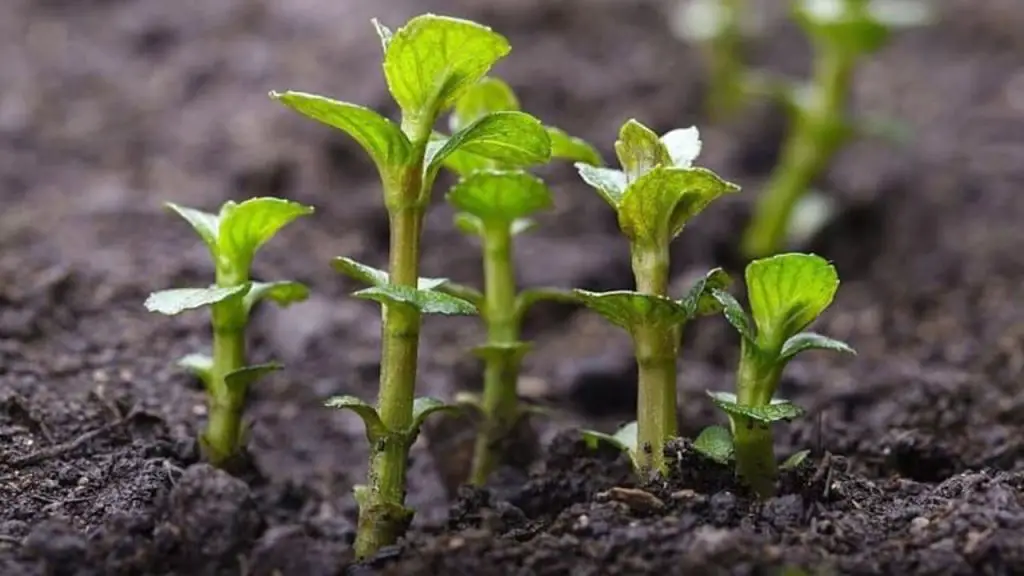Have you ever planted a seed and wondered how long it would take to grow into a beautiful plant? Whether you’re a seasoned gardener or just starting out, it’s important to understand the growth process of plants.
Plants are an essential part of our ecosystem, providing us with oxygen, food, and beauty. However, the time it takes for a plant to grow can vary greatly depending on the species, environmental factors, and cultivation techniques.
If you’re looking to grow a plant, it’s important to have realistic expectations about how long it will take to reach maturity. In this article, we’ll explore the factors that affect plant growth and give you a general idea of how long it takes for different types of plants to grow.
So, whether you’re growing vegetables in your backyard or decorating your home with indoor plants, read on to learn more about the growth process of plants.
What is plant growth?
Plant growth refers to the process of how plants increase in size and develop new structures. It involves various physiological and biochemical processes such as photosynthesis, respiration, cell division, and differentiation.
Plant growth is influenced by several factors such as temperature, light, water, nutrients, and hormones.
Understanding plant growth is essential for agriculture, horticulture, and forestry as it enables farmers and growers to optimize plant growth and yield.
Additionally, studying plant growth also helps in the development of new plant varieties and in the discovery of new medicines and chemicals.
Importance of plant growth
Plant growth is incredibly important for a number of reasons. Firstly, plants are the primary producers in most ecosystems, meaning that they are responsible for creating the food and oxygen that sustains life on Earth.
Additionally, plants play a crucial role in regulating the Earth’s climate by absorbing carbon dioxide from the atmosphere. Plant growth also helps to prevent soil erosion and maintain a healthy water cycle.
Furthermore, many plants have medicinal properties and are used in traditional medicine to treat a variety of ailments. Overall, plant growth is essential for the health and well-being of both the planet and its inhabitants.
Factors on which plant growth depends on

Sunlight and Temperature
The most important factors affecting plant growth are sunlight and temperature, as both of these aspects play a major role in photosynthesis, which is the primary process responsible for growth.
Adequate sunlight will allow your plants to receive the necessary energy they require for healthy growth while controlling temperature will help you keep them unfazed from extreme hot or cold temperatures.
Soil Nutrients
Healthy soil is key for any successful gardener. The nutrients present in the soil can help provide the necessary minerals and vitamins that your plants need to thrive and grow.
Organic matter helps improve the fertility of your soil and prevent it from becoming waterlogged after heavy rainfall or irrigation.
Water Availability
Plants need water to survive, but too much can be harmful. For a plant to perform well, it must have sufficient water and moderate moisture levels in its soil.
When watering a plant, always make sure it is done early in the morning so that no moisture stays on leaves overnight; this could increase the risks of diseases such as mold or mildew developing on them due to humid conditions at nightfall.
Air Quality
Another major factor influencing plant growth is air quality; poor air circulation can create stagnant conditions resulting in diseased foliage due to the lack of oxygen exchange required by plants for healthy respiration and uptake of essential nutrients through their roots into their leaves during transpiration cycles.
Good airflow can also reduce risk infestation with pests such as mites by preventing clusters of warm/cold air pockets forming around stems weak shoots or buds – optimal temperatures favor predators over prey!
Controlling Pests & Diseases
Many gardeners dread dealing with pests such as aphids, whiteflies, caterpillars, etc., because they can cause considerable damage to crops if left unchecked.
However, luckily there are productive ways to manage these populations without resorting to chemical products like neem oil or pyrethrins – biological methods like introducing beneficial insects into an area are increasingly popular because they look after each other’s interests naturally!
You should also inspect regularly for signs of disease present in foliage (look out for powdery mildew) and take steps accordingly – some great organic disease prevention measures include spraying diluted garlic solutions on affected parts with regularity until clear symptoms dissipate completely!
Fertilizers
Ensure that you prioritize the nutritional requirements of your plants during the planting process. It is advisable to use organic fertilizers. Select fertilizers that offer a suitable balance of elements, depending on the type of crop you intend to grow.
Make sure to provide all the necessary macronutrients such as nitrates, phosphates, potassium, and others.
Additionally, consider using micronutrient supplements, including substances like iron. Avoid applying excessive amounts of any particular nutrient at once. It is better to wait for another week and then alternate between different types of fertilizers.
Each fertilizer serves a distinct purpose and blending individual fertilization methods will consider the specific needs of each flower species in your gardening endeavors.
Pruning & Training Techniques
Pruning is the process of carefully eliminating dead or decaying branches from trees, shrubs, or hedges in order to encourage a healthier form and more vibrant appearance.
This practice has a direct impact on their growth and aids in the development of robust branch structures and root systems that provide overall structural support.
In addition, certain training methods can be employed in indoor greenhouses to manipulate the environment and achieve faster and more rapid results compared to natural growth alone.
For horticulture enthusiasts seeking comprehensive knowledge, understanding how to tie together pruning techniques, shaping bonsai, and low-stress training (LST) can yield significant benefits when executed correctly.
Different stages of plant growth
Plants go through various stages of growth throughout their lifecycle. These stages include seed germination, vegetative growth, flowering, and fruiting. During the germination stage, the seed begins to sprout roots and shoots. In the vegetative growth stage, the plant develops more leaves and stems and grows taller.
The flowering stage is when the plant produces blooms, and the fruiting stage is when the plant produces fruit. Each stage is essential for the plant’s growth and development, and understanding these stages can help gardeners and farmers care for their plants properly.
How long does it take for a plant to grow?
The length of time it takes for a plant to grow varies greatly depending on the type of plant and its growing conditions. Some plants, such as annual flowers or vegetables, can reach maturity in a matter of weeks or months.
Other plants, such as trees, can take several or even decades to reach their full size. Factors such as soil quality, sunlight, water, and temperature can all impact the rate of growth of a plant. It’s important to research the specific needs of the plant you are growing in order to properly care for it and ensure optimal growth.
Conclusion
In conclusion, the length of time it takes for a plant to grow varies depending on several factors such as the type of plant, its growing conditions, and the methods used to nurture it.
Some plants can sprout in a matter of days while others may take weeks or even months to reach maturity. However, with proper care and attention, any plant can thrive and grow into a beautiful and healthy specimen.
Whether you’re a seasoned gardener or just starting out, patience and persistence are key when it comes to growing plants.



